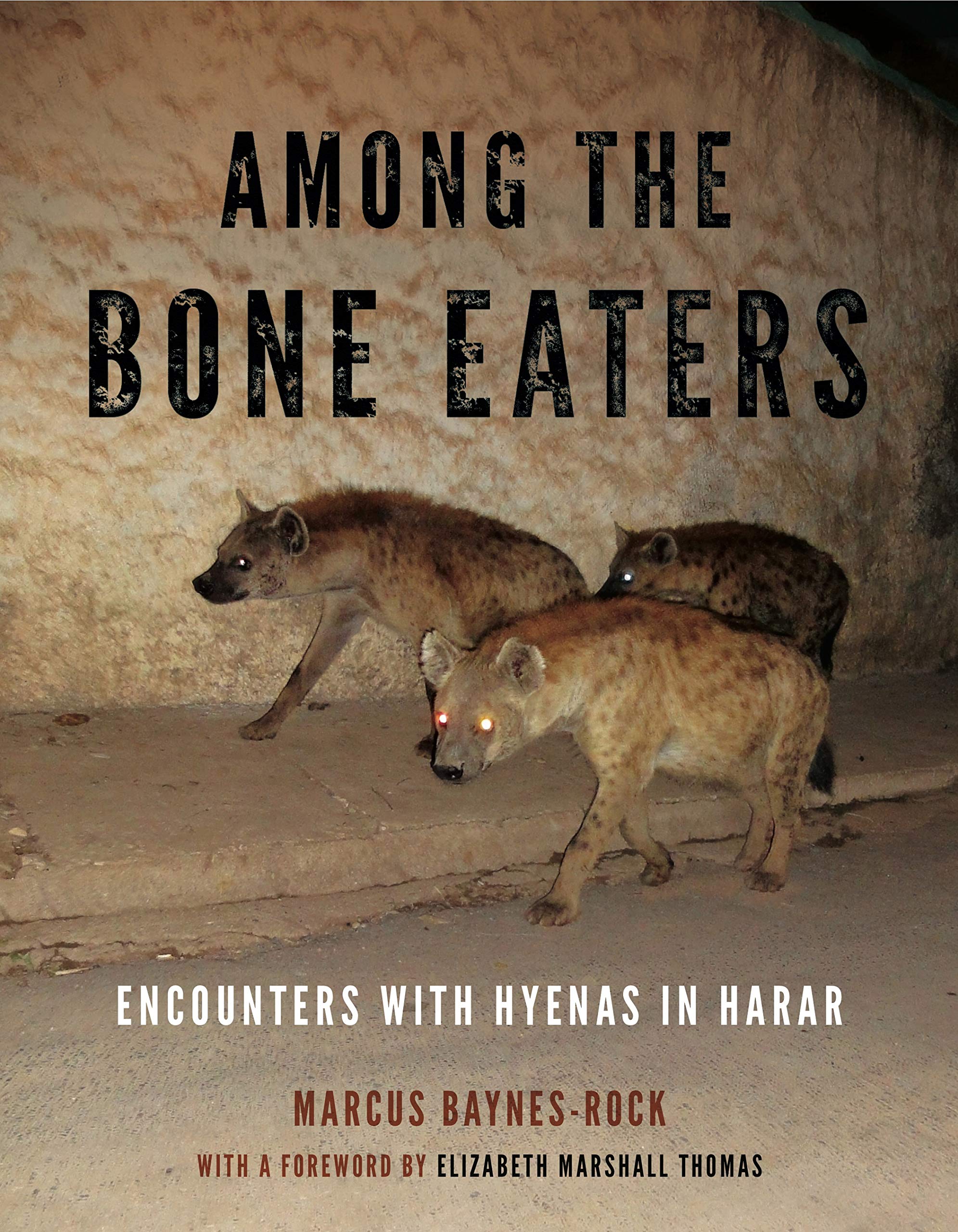Among the Bone Eaters
No rating
Part social survey, part natural history, part travelogue.
The book is a study of Harar's people, human and spotted hyena alike, focusing on inter-species relations as well as how the hyena clans organize and behave inside and outside city walls.
The first chapters set the scene. Harar is a city of 100 thousand whose old quarters, known as Jugol, form a mostly walled complex about one square km in area. While it has many attractions for hyenas thanks to our ability to waste food, the city also has a cottage tourist industry in hyena feeding. Baynes-Rock examines two such operations, uncovering not only interesting logistical differences but very different underlying attitudes toward the animals they court. The author comes to recognize hyenas like so many other animals have distinct personalities.
The next chapters introduce us to the local Sofi and Aboker hyena clans, named after the two mosques that outside …
Part social survey, part natural history, part travelogue.
The book is a study of Harar's people, human and spotted hyena alike, focusing on inter-species relations as well as how the hyena clans organize and behave inside and outside city walls.
The first chapters set the scene. Harar is a city of 100 thousand whose old quarters, known as Jugol, form a mostly walled complex about one square km in area. While it has many attractions for hyenas thanks to our ability to waste food, the city also has a cottage tourist industry in hyena feeding. Baynes-Rock examines two such operations, uncovering not only interesting logistical differences but very different underlying attitudes toward the animals they court. The author comes to recognize hyenas like so many other animals have distinct personalities.
The next chapters introduce us to the local Sofi and Aboker hyena clans, named after the two mosques that outside Jugol that fall within their territory. Hyenas mark clan boundaries using a range of scent glands. In open space these can be delinated clearly, but Jugol becomes a de facto neutral territory because of its overbuilt, cramped nature. Typically wary of humans, Harar hyenas employ the town garbage dump and nearby brush as a base prior to navigating the town. The author spends later chapters not only at the feeding exhibits but actively following them throughout the town, gaining greater knowledge of individual hyenas.
Hyenas feature heavily in Harari and Oromo folklore. The author investigates the legend of Ashura, an anti-violence truce involving a cauldron of special porridge, whose degree of overnight consumption by the hyenas is a portent of the future. They are also supposed to regulate and exorcize djinn (Islamic demonic spirits, origin of the English 'genie'). Several great interviews with local elders provide the details.
The author documents his trials and errors with getting to know the clan members. Becoming too familiar too quickly risks a devastating loss of trust. Some can develop a level of courage and inquisitiveness that becomes dangerous if not met with a quick response (namely curious biting). During his trailing sessions the author comes to relish the electricity outages because the lack of light attracts less attention.
You get immersed in the locale too. By the end of the read you realize you enjoyed your time in this sweaty, unkempt but very much alive, respectable and textured city. The mid section has the standard photo gallery to be expected of these assignments. In one shot he's literally head to head with one of the most familiar hyenas.

